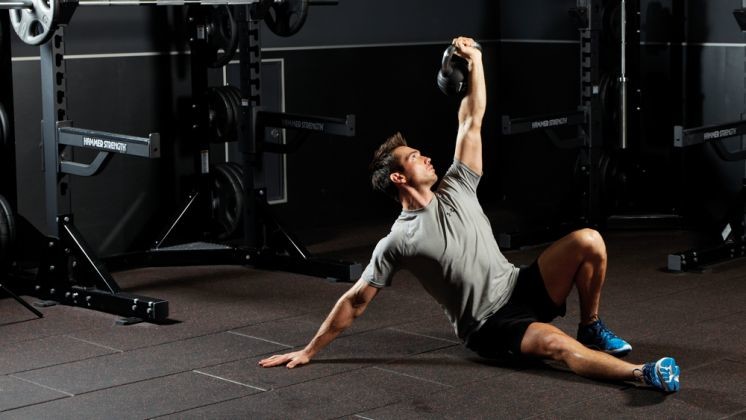How to Use Unilateral Exercises to Make Your Whole Body Stronger
menshealth.com - Focusing on one side of your body at a time can make your whole program even more effective.

If your idea of unilateral training is to toss a few single-arm or single-leg exercises into your workout as an afterthought, you’re probably not reaping their full strength-building, injury-proofing benefits.
Most (if not all) of us are asymmetrical, meaning one limb will almost always be bigger and stronger than the other. That muscle imbalances become most obvious when one limb has to support weight on its own during those unilateral movements (think: single-leg squats and one-arm presses), but if they're too extreme, the disparities can sneak into bilateral exercises as well (think: back squats and pushups).
For example, even if both arms have to work to push you up off the floor, you’re probably using more of one than the other—without even realizing it. “It’s very rare for somebody to have 50-50 weight distribution because almost everyone has a dominant limb,” says Joel Seedman, Ph.D., owner of Advanced Human Performance and author of Movement Redefined.
You’ll probably never achieve perfect symmetry between both sides of your body, unfortunately—that's just part of our makeup. That said, you should try to get as close to even as possible, especially if you're shooting for a developed physique. “The more symmetrical we are, the fewer imbalances and compensation patterns we have,” Seedman explains. The result: Greater overall strength and efficiency, as well as a reduced likelihood of injury.
Take the back squat for example. When you squat with muscle imbalances, your chance of injuring your back, knees or hips is markedly increased. Instead of generating force straight up through your core, that force pulls on the body in uneven positions and directions, according to Seedman.
Similarly, running with strength imbalances can up your risk of injury. A 2005 study published in Clinical Journal of Sport Medicine found that runners with single-leg overuse injuries had noticeable strength imbalances between the hip muscles on their injured and non-injured side. Whether the injuries were the cause or the result of the muscle imbalances is unknown—but researchers suggest these findings show a relationship between the two.
1. Do unilateral exercises first
 “Some people just kind of assume you do the heavy bilateral lift first and then you do the unilateral, but there’s no reason you can’t do it the other way around,” says celebrity trainer Ben Bruno.
“Some people just kind of assume you do the heavy bilateral lift first and then you do the unilateral, but there’s no reason you can’t do it the other way around,” says celebrity trainer Ben Bruno.
Starting your workout with unilateral exercises is actually a great way to activate muscles that would normally be a little lazy during your bilateral exercises. Sure, you run the risk of fatiguing your muscles before your big lift, but Seedman thinks there could be some warmup element at play. “ You may actually be able to lift more weight because the muscles are firing better and more symmetrically,” he says.
Even better, Seedman believes you’ll be less likely to fall back into old compensation patterns where your stronger side picks up the slack.
Continue to read»









